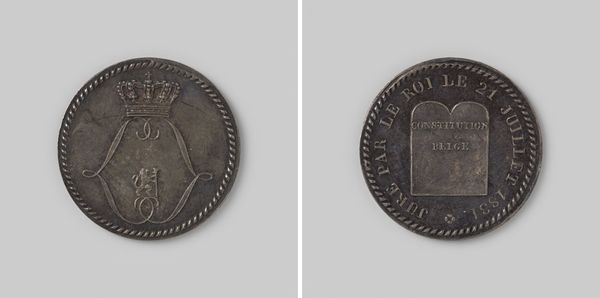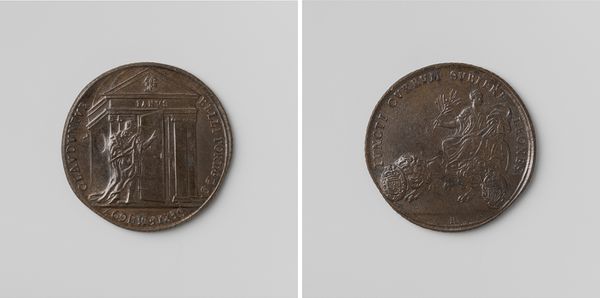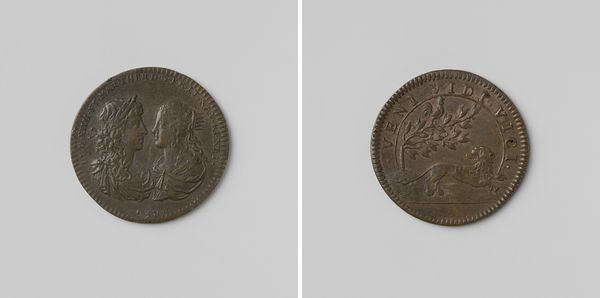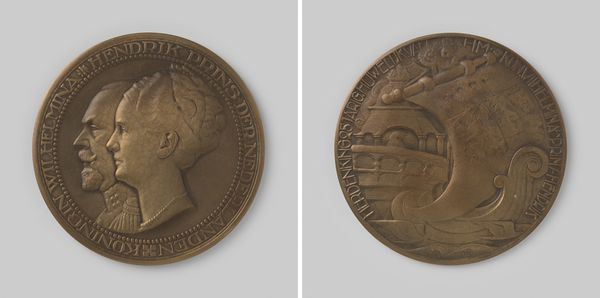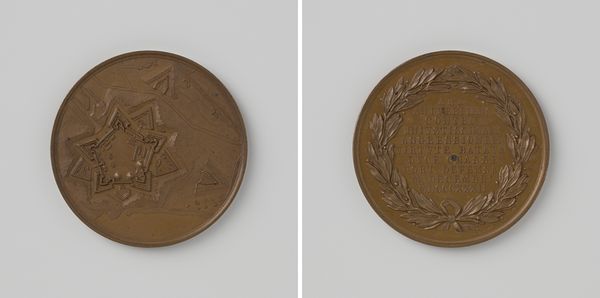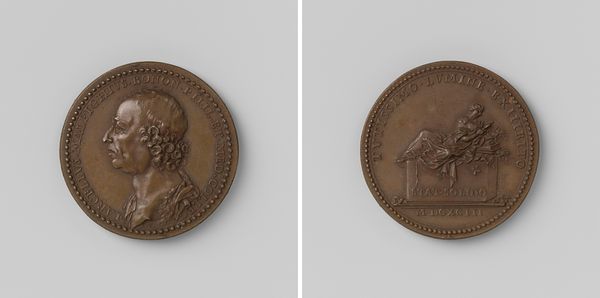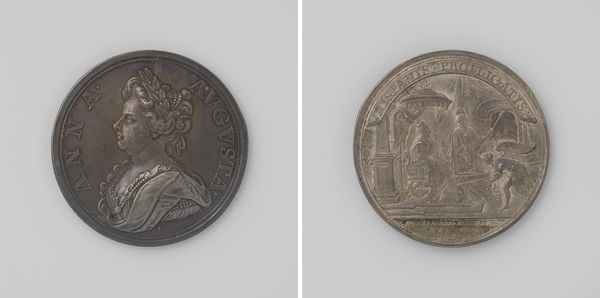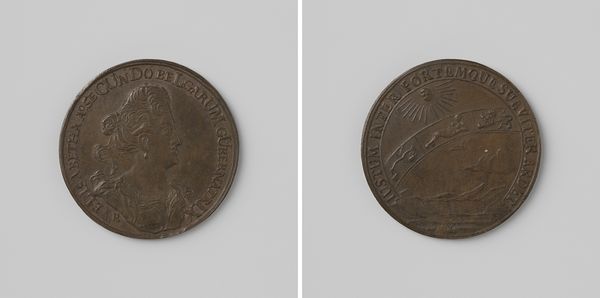
Beloningspenning van de Veeartsenijkundige Hoogeschool te Utrecht 1918 1918
0:00
0:00
relief, bronze, sculpture
#
art-nouveau
#
narrative-art
#
relief
#
bronze
#
figuration
#
sculpture
#
symbolism
#
statue
Dimensions: diameter 8.9 cm, weight 216.11 gr
Copyright: Rijks Museum: Open Domain
Curator: Let's talk about this fascinating bronze relief. It's a medal, designed by Chris van der Hoef in 1918. The Rijksmuseum refers to it as the "Beloningspenning van de Veeartsenijkundige Hoogeschool te Utrecht 1918" which roughly translates to a prize medal from the Utrecht Veterinary College. Editor: The scene on the medal looks so tender and a little heartbreaking. There's such gentleness depicted by that kneeling figure as he or she interacts with the massive beast. Is that a lion? I'm not entirely sure what's going on, but the composition immediately pulls me in. Curator: Absolutely. The image, a symbolic rendering, demonstrates healing. We can view it within a history of depicting health care, and how the medical professions framed themselves publicly during that era. Art Nouveau stylistically allowed the designer to create something with classical roots and modern sensibility for an institution keen to express both tradition and future aspirations. Editor: Tradition yes, there’s something so…old-world. Maybe it's the almost Biblical feel? Although there’s definitely that sinuous quality you associate with Art Nouveau. It must’ve felt radical but comforting to see at that time. But even today the image conveys a really evocative sense of service and the intimacy between carer and patient – even a powerful lion needing a little help. What does the text on the reverse say? Curator: That’s right. The reverse is inscribed "LAUDEM VIRTUTIS HOMINUM SALUTI", Latin for “praise the virtue of people’s welfare". It connects public virtue with veterinary skills; very interesting cultural framing for the Veterinary College’s place in wider Dutch society after the First World War. Editor: That sense of duty, even in the face of suffering...there's something noble captured there, both for the people dedicated to the college and for their broader purpose during trying times. It makes one feel deeply connected to humanity—and animality! A surprisingly potent little object! Curator: Indeed. The way visual communication through public art interacts with and promotes institutional identity offers powerful insights into this transitional moment for veterinary medicine, and for Dutch national identity itself, in the wake of a global conflict.
Comments
No comments
Be the first to comment and join the conversation on the ultimate creative platform.
